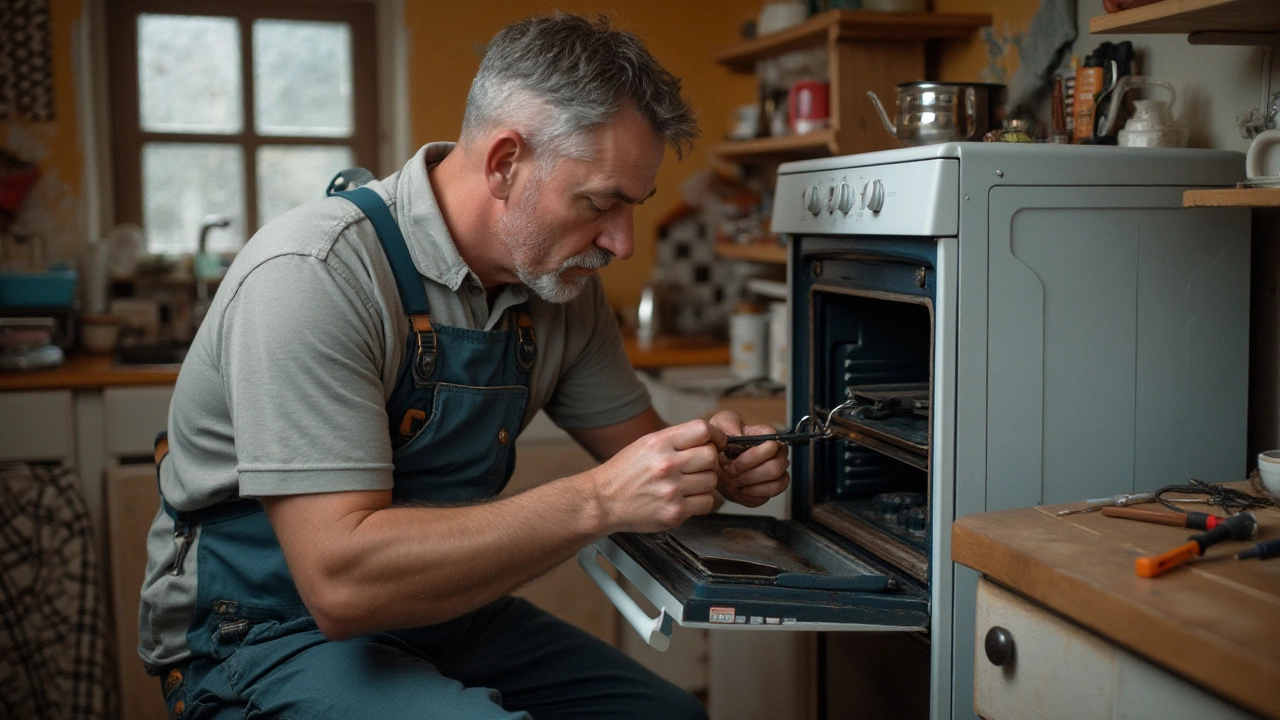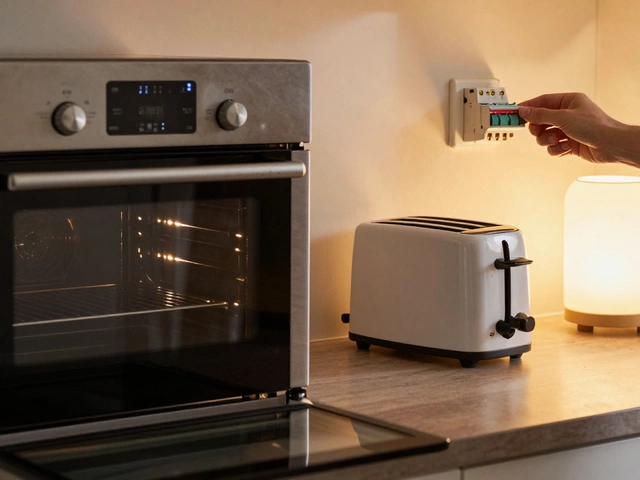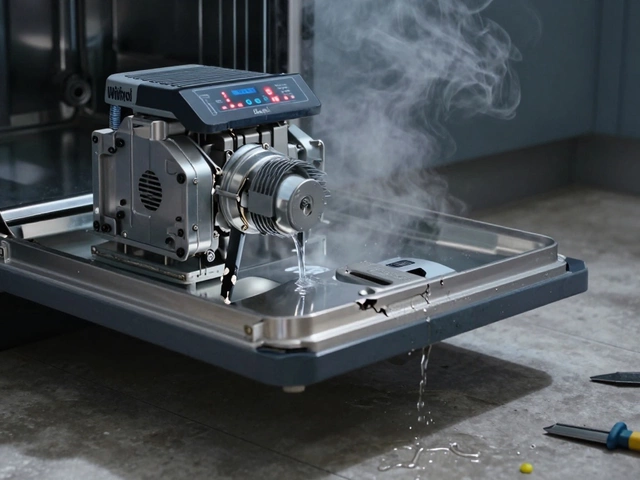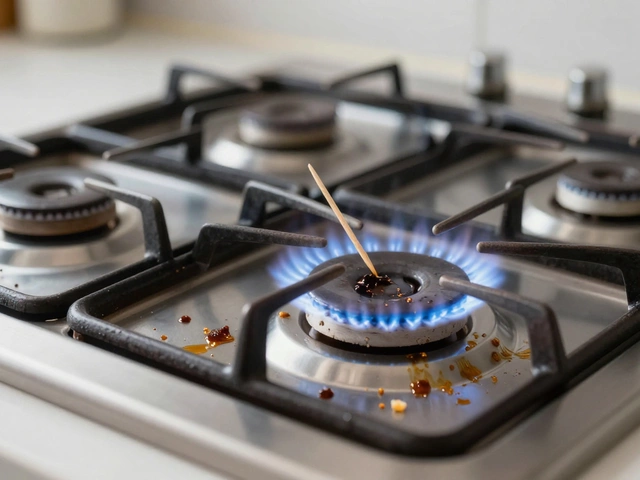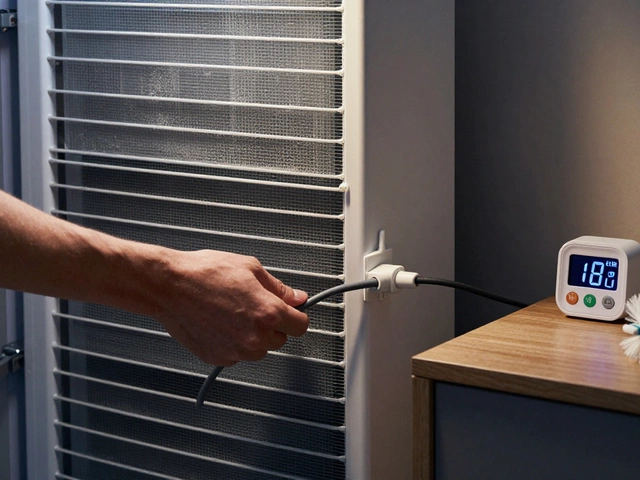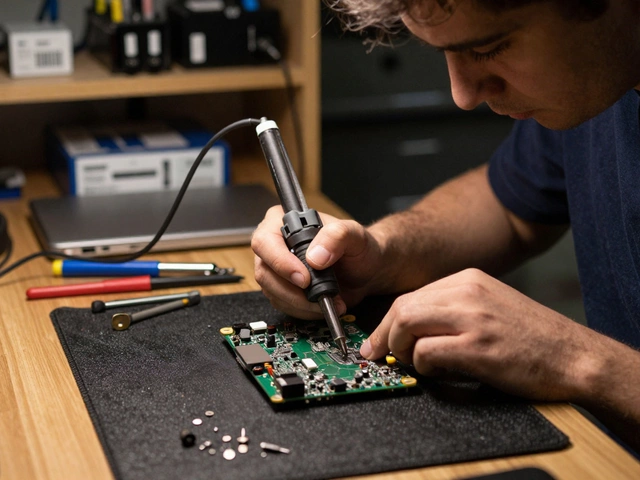Faced with an oven on the fritz, many homeowners may find themselves asking, 'Can I repair my own oven?' Tackling such a project might seem overwhelming, but with the right knowledge and guidance, it's entirely doable.
Electric ovens are complex devices, yet some common issues can be fixed with a bit of elbow grease and patience. From addressing heating inconsistencies to resolving problems with the thermostat, there are several fixes that can be attempted without needing a professional. Recognizing the importance of using the right tools and approach can make all the difference in the success of your repair journey.
It's crucial to emphasize safety as well as smart decision-making. Not every problem can or should be handled at home, but understanding when to call in an expert can save time and prevent further damage. Dive into the world of DIY oven repairs armed with knowledge and confidence.
- Understanding Your Oven's Basics
- Common Oven Problems and Solutions
- Essential Tools for DIY Oven Repair
- Safety Tips for Home Repairs
- When to Consult a Professional
Understanding Your Oven's Basics
Electric ovens are the beating heart of many kitchens, crucial for creating everything from weeknight dinners to extravagant holiday spreads. Before diving into repairs, it's essential to grasp how these machines work. Essentially, they use electricity to heat up internal components, cooking food through direct contact with heated air. The key components include the heating elements, thermostat, and the control panel. Each plays a vital role in ensuring your culinary creations are cooked to perfection. Learning about them can be both enlightening and practically rewarding when facing malfunctions.
At the core of every electric oven are its heating elements. These are the unsung heroes responsible for heating your oven to the desired temperature. Typically, there are two: the bake element located at the bottom, and the broil element at the top. When these components are faulty, your oven may not heat properly, leading to undercooked or overcooked dishes. A clear understanding of their function can help you identify if they are the root of the problem when troubleshooting issues.
The thermostat is another crucial part of the setup, acting as the oven's brain. It regulates the temperature by sending signals to the heating elements to either increase or decrease heat. A malfunctioning thermostat might result in the oven not reaching or maintaining the set temperature, causing baking frustrations. Understanding how your thermostat operates aids in diagnosing temperature-related problems, enabling you to address any discrepancies effectively.
The control panel, often seen as the nerve center of your oven, coordinates between your commands and the oven's operations. It manages everything from temperature settings to cooking modes. Familiarity with your oven's interface is crucial because electronic glitches or misconfigurations can mimic hardware issues. By learning to navigate its features, you can rule out user errors before considering costly repairs. Remember, "knowledge is power" especially when dealing with home appliances.
Understanding the general layout and function of your electric oven's interior parts is key to effective troubleshooting. According to a study by the Association of Home Appliance Manufacturers,
"80% of homeowners find more success in fixing appliances when they understand basic operational principles."This quote highlights the importance of knowledge prior to undertaking repairs. Armed with this fundamental understanding, you're already a step closer to solving common problems, whether they involve fixing a faulty oven or simply learning when to reach out to a professional.
Common Oven Problems and Solutions
Dealing with a malfunctioning oven can be frustrating, especially when you’re not sure where to begin diagnosing the issue. One of the most prevalent problems people encounter with their electric ovens is uneven cooking. If you notice that your cakes are coming out of the oven with one side more browned than the other, it is likely that the heating elements are the culprits. Electric ovens rely heavily on these elements to evenly distribute heat, and over time, they can start to wear out or accumulate residue that affects their efficiency. A simple inspection can help you determine if either the top or bottom element has visibly deteriorated, and replacing them might resolve the cooking imbalance.
Another common issue is when the oven simply won’t heat up. In this scenario, it's crucial to check the power source first – is there a blown fuse, or perhaps a tripped circuit breaker? If your power supply is in order, then the thermostat could be affecting the heating. The thermostat is responsible for regulating temperature and a broken one can cause your oven to misjudge or fail to reach the desired heat levels. Replacing a thermostat can usually be done with some guidance; however, getting the right part specific to your model is essential.
Sometimes, the oven works fine but emits unusual noises or odors during operations. Strange sounds often indicate a loose part or a buildup of debris that may interfere with the fan or other moving components. In contrast, peculiar smells could suggest odorous buildup that's burning off, or perhaps a sign of electrical issues. When embarking on a DIY fix, dismantle the interior carefully to inspect for any lodged objects or signs of melting components. If the fan appears to be the source, ensure it is properly aligned and free of blockages.
“No one ever wants an oven that won’t shut fully,” says kitchen technician Alex Marsh of Appliance Gurus. A faulty oven door is yet another challenge many face. If your door won’t close all the way, check the hinges for signs of warping or damage. Additionally, the door seal, which is often a rubber or silicone gasket, can become brittle or loose over years of repeated heating cycles, making it necessary to install a fresh one to ensure the door seals tight, retaining the heat efficiently within the oven.
Understanding these symptoms and knowing some quick oven repair tactics can save quite a bit of money and hassle. However, not all fixes are straightforward. Consider a few tools that could be handy here: a screwdriver set for accessing internal components, an ohmmeter for testing electrical parts, and a flashlight to closely inspect the hidden nooks. Knowing this could help you be better prepared in tackling minor issues before they escalate.
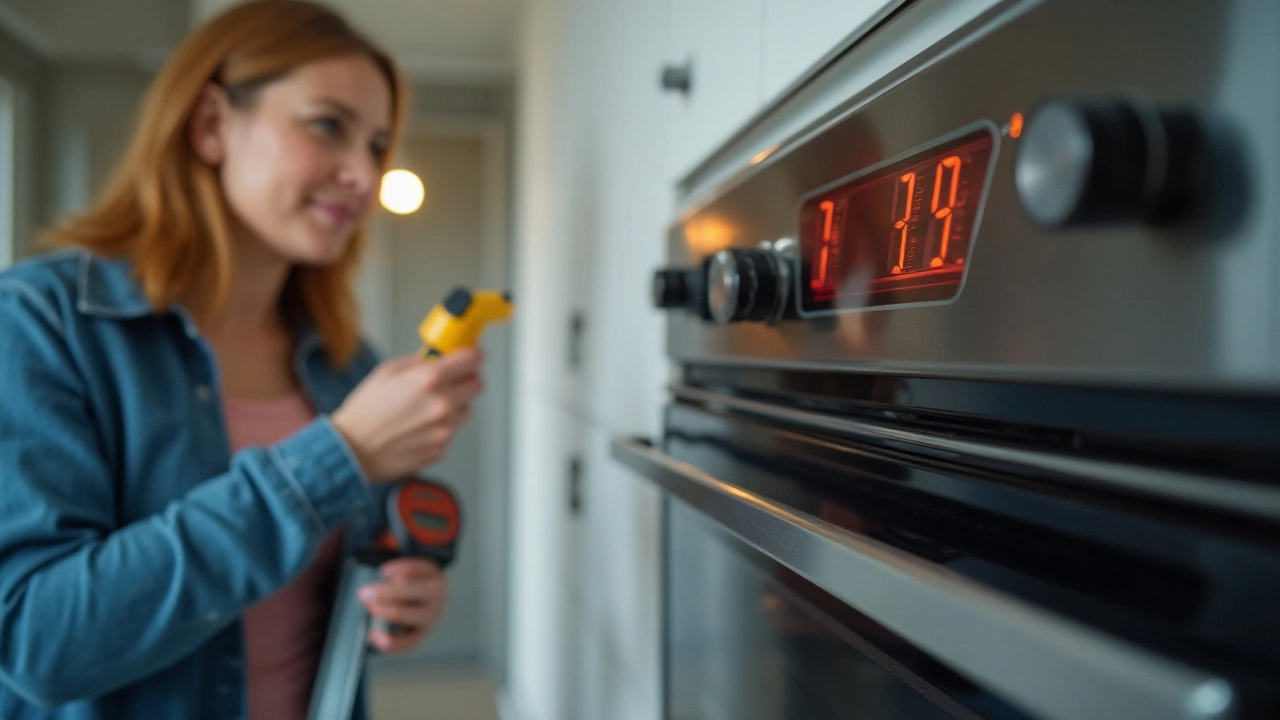
Essential Tools for DIY Oven Repair
Embarking on a journey to repair your own electric oven requires not just courage but the right set of tools. Having a well-stocked toolkit makes the difference between a frustrating day and a successful repair. You might be surprised to learn that many problems, like fixing a regular oven issue, can be tackled with basic household tools most people already own. Start by gathering a set of screwdrivers, a necessity for removing panels and accessing parts inside the oven. Make sure these include both Phillips and flathead variations, as appliances often use a mix of screws.
A multimeter is invaluable as it helps diagnose electrical issues that are not visible to the naked eye. It lets you measure voltage, current, and resistance to ensure components are functioning correctly. For instance, if your oven isn't heating, the multimeter can indicate if the heating element is faulty or if another component is the culprit. Another necessity is a pair of needle-nose pliers, perfect for gripping small components and dealing with tricky electrical connectors.
Another tool that is indispensable in DIY oven repair is an adjustable wrench. Many ovens have connections that require this tool for loosening or tightening. Insulating tape is crucial for any tasks involving electrical connections, ensuring your repairs stay safe. Additionally, keeping a flashlight handy is a simple but effective way to ensure you can see clearly in the dim interior of your oven. Proper visibility is essential to avoid mistakes and ensure your work is effective.
Besides these, consider investing in heat-resistant gloves. Ovens, even when turned off, can retain heat for extended periods, posing a risk. Wearing such gloves gives you a layer of protection against accidental burns. A reliable voltage tester is also worth mentioning. A simple touch to the right points with this tool can confirm whether wiring is live, preventing potential shocks. According to home repair expert Ron Hazelton, "Successful appliance repair is about having the right mindset and the right tools."
"When you're prepared with the essential tools and a bit of know-how, even daunting tasks become manageable," he adds.
For those inclined to delve deeper, supplemental tools like wire strippers, a soldering iron, or a stud finder can make some complex tasks easier. However, most electric oven problems are manageable with the basics. With patience and the correct tools, you can save time and money while gaining a sense of accomplishment from completing the repair yourself.
Safety Tips for Home Repairs
When embarking on a DIY oven repair, safety should always be your top priority. Working with electric ovens involves certain risks, especially since these appliances are powered by high-voltage electricity. It's essential to equip yourself with the knowledge and tools to manage these risks effectively. Begin by ensuring the oven is completely disconnected from its power source. This means not just turning it off but unplugging it from the outlet to eliminate any chance of electric shock while you're working. You might be surprised to know that a significant percentage of home repair accidents are due to simple oversights, such as failing to disconnect power, which is a crucial first step in DIY fixes.
Equip yourself with the right safety gear before you start. Thick, rubberized gloves can protect against possible cuts from sharp components and provide insulation against electric current. Safety glasses are also crucial because dust and debris tend to fly when you're tinkering, and it's better to be protected than to inadvertently harm yourself. You might find it helpful to have a standby safety kit in your workspace, one that's stocked with basic first aid supplies in case of minor mishaps.
"Even those with experience in home repairs can benefit from refresher checks on safety protocols. Never underestimate the basics," advises John Doe, a seasoned home appliance technician with over 20 years of experience, underscoring the importance of foundational safety measures.
Organization is another key component to safe oven repairs. Lay out your tools and parts neatly, keeping your workspace clutter-free. This organized setup helps prevent accidents, such as tools falling or you tripping over cords. If you're working in a cramped kitchen, make sure there's ample light to see what you're doing and ensure the floor is dry. Slippery floors are hazardous and can lead to falls, particularly if you need to move around appliances. For those who might be new to home appliance repair, it's beneficial to use a detailed step-by-step guide. This approach keeps you on track, minimizes oversight, and prevents you from skipping crucial steps that could affect not just the success of the repair but your safety as well.
Consider the use of a multimeter to check for live circuits before you touch any wiring. This tool is invaluable in ensuring that the power is genuinely off and helps prevent accidental shocks. In households where electric ovens have been operating for a decade or longer, wiring might be worn or brittle. Always handle with care, replacing any damaged cords immediately instead of attempting makeshift repairs that might lead to bigger problems down the line. When unsure about the integrity of the wiring, consulting with a professional is always a prudent choice. Remember, a saved penny on the service cost is not worth personal safety.
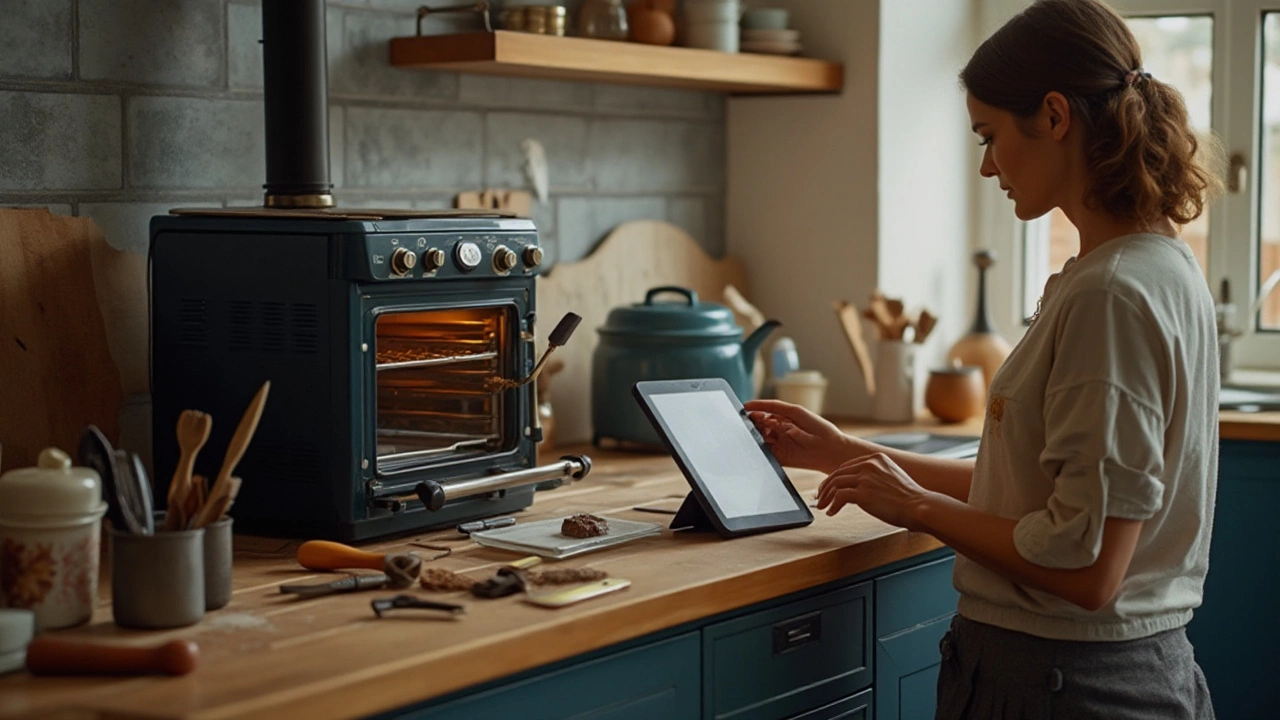
When to Consult a Professional
Attempting to repair an oven can be an empowering experience, but understanding your limits is equally crucial. Some issues can quickly spiral beyond the safety and capability of most DIY enthusiasts. Recognizing when it’s time to call in a skilled technician is essential to avoid potential hazards or causing more extensive damage to your appliance. Knowing when to consult a professional can save you time, ensure that your electric oven is properly restored, and sometimes save you from significant additional costs down the line.
Certain technical problems go far beyond a simple DIY fix. For instance, issues within the oven's electrical components, such as wiring issues or control board malfunctions, demand specialized knowledge and tools. Inadequate handling of these can lead not only to further damage but also to serious safety risks, including electrical fires. It’s recommended that any situation that involves live electrical circuits be managed by someone trained in appliance repairs. These experts not only address the symptoms but often uncover underlying issues in your appliance, ensuring a thorough fix.
It’s also important to consider the tools and resources at your disposal. Professional repair technicians often have access to the latest tools and technology, which means they can handle complex repairs more efficiently. For example, they often have diagnostic equipment that can pinpoint problems that an untrained eye might miss. As described by the Home Appliance Manufacturers’ Association, 'Relying on professional expertise for intricate repairs ensures longevity and efficiency of your home appliances.'
Sometimes it’s not just about the complexity, but also the time and aggravation. Life’s busy, and spending hours troubleshooting minor oven repair issues might not be the best use of that time, especially if gentle attempts don’t yield expected results. Consider the convenience and potential value of having a professional handle the repair while you focus on other important tasks. Don’t underestimate the peace of mind that comes with knowing the job is done correctly.
Another key aspect to consider is your appliance's age and condition. If your oven is reaching the end of its lifespan or has multiple issues, professional advice can provide insight into whether repair or replacement would be more cost-effective. Trustworthy technicians offer a detailed understanding of the appliance repair market and can guide you in making informed, pragmatic decisions for your household.
Lastly, warranties may influence your decision. Many ovens come with a warranty that covers specific repairs if performed by an authorized provider. Attempting a repair yourself might void these benefits, leaving you liable for costs that could have been covered. Always check the terms of your oven’s warranty and consider utilizing professional services to retain these benefits.
